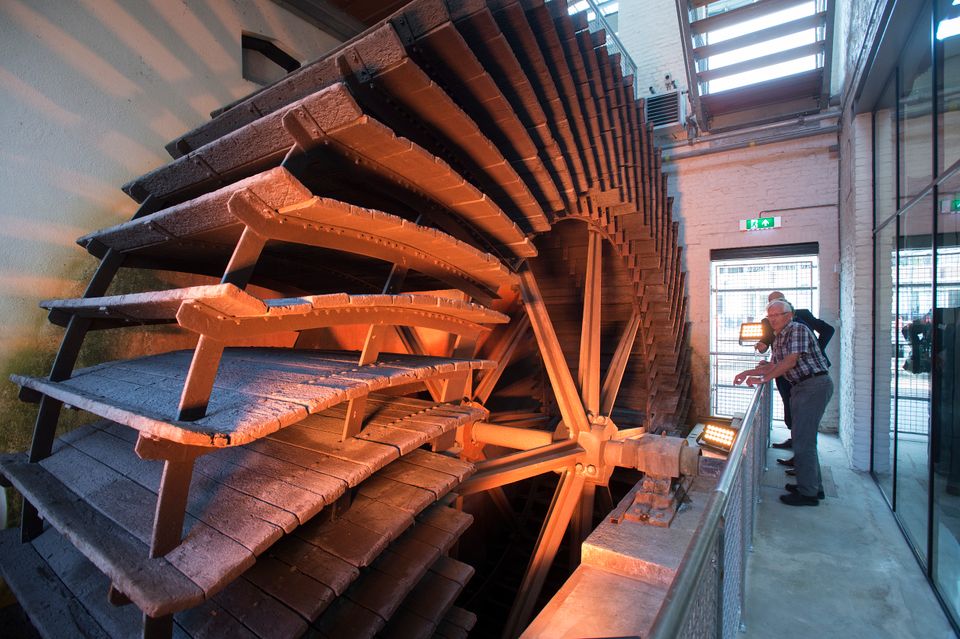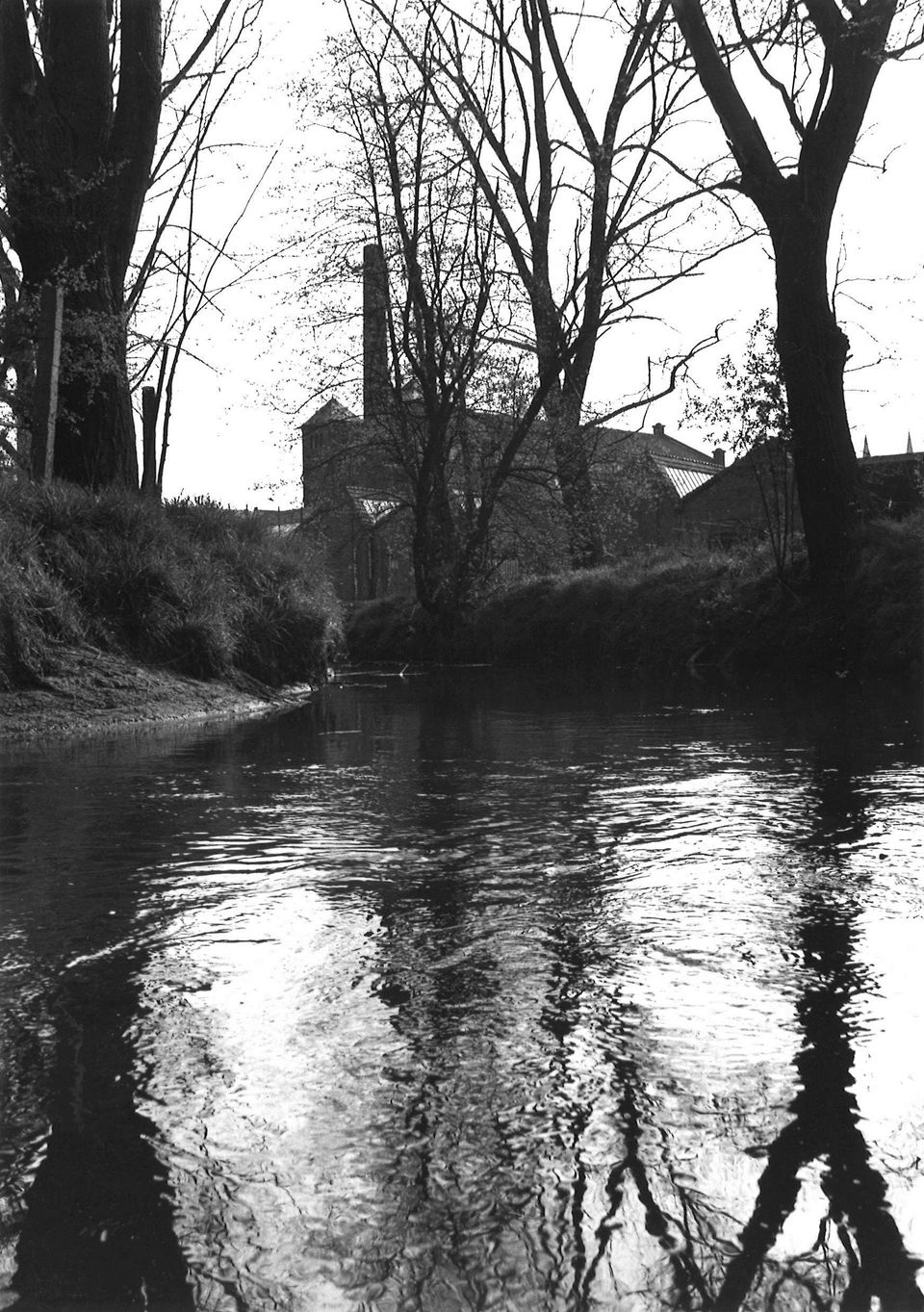Sagebien Water Wheel
The Sagebien Water Wheel: Rolls Royce of the water wheels
There was already mention of a water mill in Geldrop in the Middle Ages as well as a document from 1798 which describes a double water mill which functioned as a grain, oil and fulling mill. In 1820, the Geldrop watermill was incorporated as a fulling mill into the woollen fabric factory of the Van den Heuvel & Eijcken company. Willem van den Heuvel continued the company in 1851, had the current building constructed in 1863 and renovated the waterwheel in 1874. A. van den Heuvel ran the business from 1895 onwards, but in 1911, the family business was converted into the NV Wollenstoffenfabriek v/h A. van den Heuvel & Zoon. Due to a major fire in 1908, a new building was constructed, the facade prominently showing the name of the then-current director.
The textile industry struggled in the second half of the twentieth century. The production of the factory of Van den Heuvel came to a standstill in 1981. Now the Weaving Museum is situated in the old spinning mill. In 1874, the waterwheel was replaced by a Sagebien waterwheel that powered the full machines. It was a modern design for the time.
A Sagebien wheel was a slowly rotating undershot wheel that worked efficiently due to a large number of slightly curved blades. Van den Heuvel may have chosen this wheel due to his friend Petrus Regout, founder of the Sphinx pottery factory. Some years before, Regout had also had a Sagebien wheel installed for his varnish mill in Maastricht.
The Geldrop watermill, later also called Weaving Mill, is an under-hammer mill on the Kleine Dommel in Geldrop. This was already mentioned in the Middle Ages as well as a document from 1798 which describes a double water mill which functioned as a grain, oil and fulling mill. The watermill is currently on display in the Weaving Museum.

The water supply of the Kleine Dommel did not always provide enough energy to power all the machines and in 1920 a switch was made to electricity as an energy source.
The waterwheel fell and the remains came to lie under a concrete slab. When the Weaving Museum was established in the factory buildings, it was also decided to restore the water wheel. The water wheel has been rebuilt on the basis of drawings of the Maastricht wheel. It has a diameter of 6.8 meters and a width of 2 meters. In the year 2000, the internal water wheel was put back into operation.
After the water wheel came to a standstill in 2012 and did not run for about 1½ years, the water wheel was renovated again in 2013. The bearings were replaced and various wooden blades renewed, after which the wheel could be put back into operation. The waterwheel doesn't propel anything; in the future, the wheel may be used to generate electricity or to power machines again. But in order for that to happen, the Kleine Dommel has to be able to supply sufficient water.

The river that flows through Geldrop, "De Kleine Dommel", has been of great importance to the textile industry of Geldrop for centuries.
It was necessary for washing the wool, rinsing the sheets, dyeing and filling. The people of Geldrop needed a lot of water. By filling, the fabrics shrank, making them stronger. The Dommel was already of great importance in the time of the home weavers. Until the mid-19th century, people weaved at home. The products that had been woven were then finished and sold by so-called manufacturers.
De Kleine Dommel has had a watermill that served as a grain, oil and full mill ever since the Middle Ages. In 1854, the Van den Heuvel firm bought the watermill from Baron de Heusch van Zangerije, who in turn had taken it over from the Lady of Mierlo. Later, this mill was replaced by a water wheel. The water wheel powered the loading machines.
